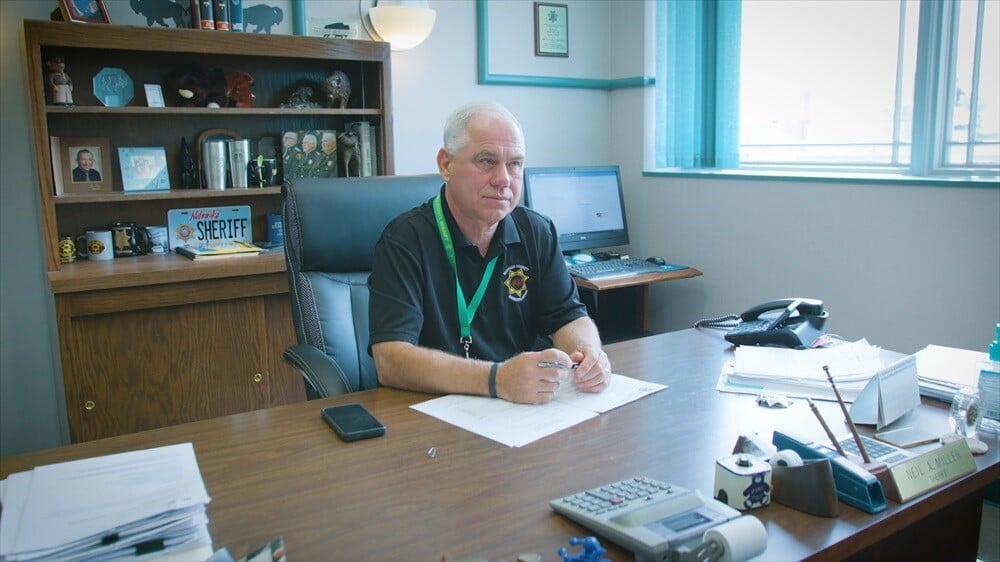What do corrections professionals often dislike? Change, and the way things are! Whether it involves a new policy, a new law, new technology, or new leadership, it’s human nature for officers to feel vulnerable and uncomfortable when familiar routines are altered. Still, change is necessary, and moving forward as individuals and agencies requires us to learn, grow, and adapt.
In prisons, logs are kept for everything—from headcounts and security checks to inmate activities, visitor records, blanket exchanges, meals, and more. This documentation is essential for auditing, accreditation, meeting jail standards, and reducing risk and liability for the agency. As the saying goes, “If it’s not documented, it never happened.” Not being able to prove in court that procedures were followed due to a lack of necessary data from manually processed paper logs is a harsh reality that corrections agencies face daily.
Whether mandated by state law or a proactive move toward modernization, digital technology is revolutionizing inmate tracking by streamlining processes, improving documentation, and reducing liability for agencies and facilities across the country. However, this type of major transformation does not come without challenges. Innovation affects everyone in an organization and can make people nervous and uncomfortable, even when they know that short-term disruption will lead to long-term benefits.
Strategic change management is key to creating an inclusive environment where employees feel empowered, operational disruption is minimal, and productivity is optimized. This blog dives into how to effectively and efficiently navigate changes, like digitally transforming a corrections facility.
Leading Change Management
Change management involves preparing, equipping, and supporting individuals to adopt changes in a productive way that drives organizational success. As a jail administrator, you are also a change manager. In fact, the American Jail Association has identified Change Management as one of the 22 Core Competencies for Jail Leaders.
Effectively leading change begins with adopting the right mindset and creating an environment where staff feel empowered to be the driving force behind that change. Officers who trust the process will engage more actively and feel secure in their positions, without fearing that they may be replaced by technology.
Communication is key to fostering the right environment for change and should be holistic. Involve officers from the outset; ask questions, encourage input, and allow staff to embrace change on their own terms. This process is known as motivational interviewing. By allowing staff to be a meaningful part of the conversation, you enable them to identify and define their reasons for the change. This two-way dialogue builds trust and increases adoption. Team members will no longer see the change as a threat but as a benefit, becoming advocates and ambassadors for the initiative.
Motivational interviewing is scalable and critical to achieving buy-in across the organization. One person cannot communicate with all staff affected by a change. As the backbone of the organization, sergeants are ideally positioned to serve as change agents. They have the authority and platforms (e.g., squad town hall meetings) to inform, share, and communicate the change effectively.
When seeking out agents for change within your organization, keep in mind the following:
-
The work of a change manager is setting staff up for a mindset change – transitioning from the past to a future vision.
-
Rely on the people you have hired and promoted.
-
Each officer brings something valuable to the table. Recognize them for their input, no matter how resistant or supportive.
-
Listen to and make use of input and constructive feedback. Remember there are lessons to be learned from past experience.
-
Be decisive. Make policy decisions that mitigate risk and balance workload.
-
Always keep in mind the reason(s) for innovation. Ultimately, technological advances should increase efficiency and ease workloads.
-
Recognize that true transformations are few and far between in the corrections field. Promote the opportunity for leaders to leave a legacy.
Two Paths to Implementing Change
When removing a bandage, there are two basic approaches: you can rip it off quickly or remove it slowly. Both methods are effective but rely on different techniques. The same principle applies to implementing new technologies.
-
Approach #1: Grip It and Rip It! (Recommended)
Once classroom training is complete, officers receive their marching orders and are equipped with new knowledge, policies, and tools. With the “Grip It and Rip It” approach, they immediately implement all the new skills and information learned during training. A major benefit of this method is that issues are typically identified quickly, while service providers are still onsite and available to troubleshoot and provide additional training. This approach is the most popular among agencies implementing GUARDIAN RFID digital technology, as it leads to faster staff adoption and reduces duplication of work. -
Approach #2: The Slow Peel.
Another approach for transitioning to a new digital tracking platform is staged implementation. This method involves a slower process that breaks the training and rollouts into smaller modules executed over several weeks. For example, a 4-week staged implementation of GUARDIAN RFID might look like this:-
Training – 4-hour Blocks of Cascaded Learning
-
Week 1 – Cell Checks and Security Checks, Compliance Monitor
-
Week 2 – Headcounts and Meals
-
Week 3 – Inmate Movement, Recreation and Supplies
-
Week 4 – Medications, Facility Checks, and Custom Modules
-
The length of time required for this process can lead to frustration among staff, as they may forget some of the classroom training by the time it comes to implementing the later parts of the process. It is important to allow for mistakes during this type of transition and to allocate time for counseling and corrective action.
With both approaches, officers receive a combination of classroom and hands-on training on how to use and optimize digital tracking as a tool to simplify documentation, streamline work, and reduce risk in the corrections environment. The ultimate goal is to achieve compliance and establish the most defensible logging system possible.
5 Best Practices For a Successful Digital Transition
Once you’ve committed to transitioning to digital tracking, engage staff through effective communication. Share the project roadmap and timeline and provide regular updates highlighting benchmarking goals to celebrate successes and ensure things stay on track. In addition, consider these best practices:
-
Implement a “sunset” period of dual logging: To ensure there are no gaps in information as you transition from manual to digital tracking, run a dual logging system for a designated period. This allows staff time to adjust to the new practices and ensures that the new system is fully functioning before discontinuing previous methods. A sunset period of 48 hours is typically recommended, but more time may be needed depending on staffing and shifts.
-
Reinforce the promise of “making the job easier and more efficient”: Look for opportunities to highlight and reinforce the benefits of the transition and its positive impact on employees' jobs. Keep staff informed about efficiency increases and risk reductions resulting from the new technology.
-
Talk to staff: Observe how the new technology is functioning. Use your intuition to gauge its effectiveness. Ask questions that help you understand how staff are adapting. If employees are struggling, seek their input by asking questions like, “If things worked exactly the way you wanted, what would be different?”
-
Do not be afraid to make policy changes post-implementation: Use feedback from staff to guide continuous system improvements. Listen attentively and remain open to suggestions from all levels and ranks; you never know where or when the next great idea may emerge.
-
Recognition: If staff are embracing the change, acknowledge their hard work and thank them for being a vital part of the successful transition.
Successfully Sustaining Change
It would be a shame to see all of your team’s hard work go to waste if the changes you've implemented don’t take hold long-term. Therefore, an important element of sustainable change management is continuous evaluation and adjustment. By assessing what works and recognizing areas that may need to be monitored or improved, you will become more tactically proficient and be able to modify processes as needed.
Here are some steps to effectively sustain change:
-
Enlist SMEs: Identify staff members who have become subject matter experts (SMEs) in areas related to the new digital system. These individuals will serve as your go-to resources for training new employees. In addition to being knowledgeable and proficient, they should be skilled in promoting the “whys” of the process and helping others feel confident about the systems that have been put in place. These team members will also have the insight and influence to address potential issues as they arise.
-
Instill accountability: Put sergeants in positions to use the system every day and hold officers individually accountable for any late or missed checks.
-
Standardize reporting: Ensure that staff are reporting meaningful information in shift briefings. If it is important to the sergeant, it will be perceived as important by others.
-
Celebrate victories: Share the success of the transition beyond your organization. Invite local media to develop a story about the positive changes happening at your facility and how the switch to digital tracking has enhanced the safety and security of inmates, visitors, personnel, and the community. For example, Fox 28 News in Savannah, GA, covered the implementation of a mobile inmate tracking system at the Chatham Co. Detention Center: Chatham County jail to get new digital inmate tracking system.
Change may seem hard at first but good leaders can make it easy. Implementing change in a facility that operates 24 hours a day, 7 days a week, with the critical mission of keeping inmates safe from each other while ensuring staff and community safety, is not an easy task. To effectively manage change in these environments, we need to recruit motivators and champions from within.
Rely on your sergeants and hold them accountable for delivering strong leadership, unified messaging, and mentorship. Create a clear roadmap that is well communicated to help employees understand why change is needed and what is expected of them. Choose a method that works for your facility and circumstances, as you know your team better than anyone else.
ADDITIONAL RESOURCES
For those interested in learning more about the science behind change management, below is a list of informative resources:
-
Yes! 50 Secrets from the Science of Persuasion – Noah Goldstein PhD.
-
Mindset: The New Psychology of Success. – Carol S. Dweck
-
Thinking, Fast and Slow. – Daniel Kahneman, Nobel Prize winner
-
22 Core Competencies for Jail Leaders – American Jail Association and Innovative Center for Public Policy.


